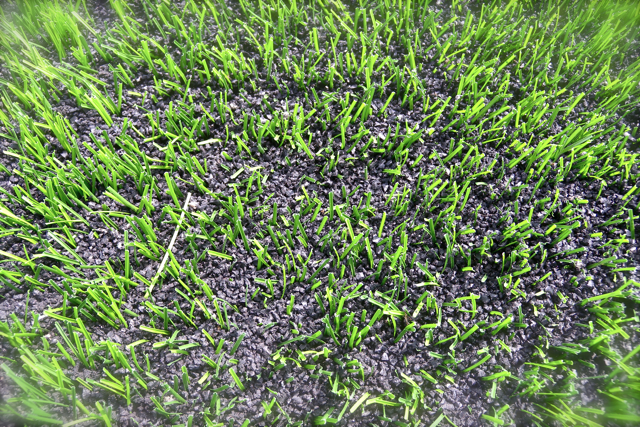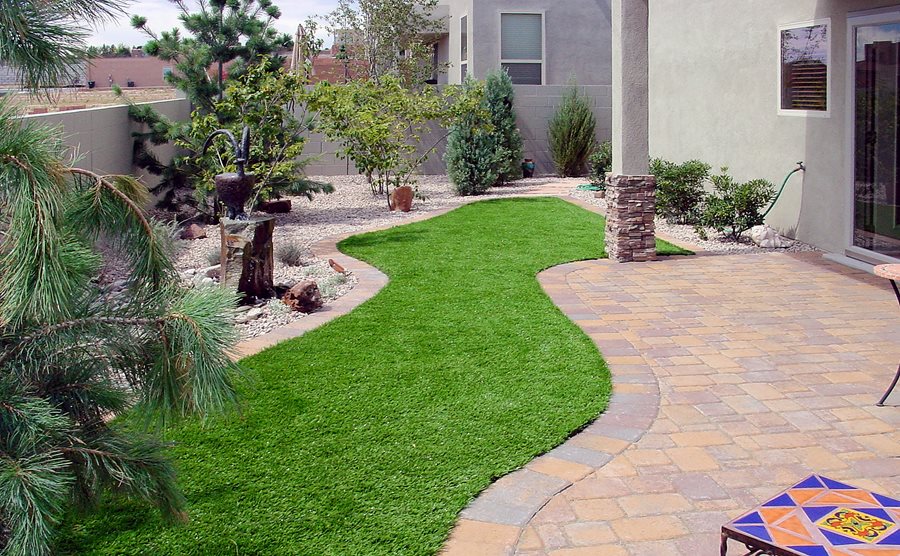See Why Homeowners Prefer Synthetic Grass for Sustainable Landscape Design Practices
As home owners increasingly focus on sustainability in landscape design, man-made grass has actually arised as an engaging alternative to conventional lawn. Its capacity to save water, minimize upkeep efforts, and reduce environmental effect positions it as a useful choice for those looking for eco-friendly services. The visual charm and flexibility of artificial lawn provide to diverse layout preferences. The effects of this shift extend past mere comfort and aesthetic appeals, prompting a more detailed evaluation of exactly how these choices affect broader environmental outcomes. What stays to be explored is the full extent of advantages that synthetic grass can provide to home owners and the atmosphere alike.
Water Preservation Benefits
Among one of the most significant advantages of fabricated lawn is its role in water conservation. Standard yard lawns require substantial amounts of water to maintain their lavish look, frequently leading to overuse of neighborhood water resources, especially in arid areas. In comparison, synthetic grass eliminates this demand completely, as it does not need irrigation. This not only preserves water however likewise lowers the pressure on municipal water systems, particularly during drought conditions.
Moreover, the installation of synthetic grass can add to a much more sustainable landscape. Property owners can substantially reduce their water bills, permitting reallocation of resources to various other ecological initiatives or household usages. In addition, synthetic grass is developed to endure various weather problems without the demand for supplementary watering, making it an excellent selection for areas dealing with water shortage.
The ecological advantages prolong beyond prompt water cost savings. By decreasing water consumption, synthetic grass aids to alleviate the effects of climate adjustment, protecting vital ecological communities that are endangered by excessive water removal. As lasting landscaping techniques acquire traction, fabricated turf becomes an accountable choice for homeowners looking for to create eco-friendly exterior spaces.
Lowered Maintenance Initiatives
Synthetic grass dramatically decreases upkeep efforts contrasted to traditional lawn yards. With synthetic grass, home owners can eliminate the lengthy jobs related to all-natural landscape design, such as mowing, fertilizing, and weeding. This not just saves useful time but likewise lowers physical labor, making lawn care obtainable for people of all ages.
Among the most remarkable advantages is the absence of routine mowing. Typical lawns require regular cutting to maintain a cosmetically pleasing elevation, whereas artificial grass stays continually lush without the need for cutting. In addition, property owners no much longer require to use plant foods or chemicals, which are frequently needed to keep natural turf healthy. This shift not only lightens the workload however likewise advertises a neater, more uniform appearance year-round.
Moreover, synthetic grass is durable and durable, needing marginal maintenance past occasional cleaning and rinsing to eliminate debris. This ease of upkeep permits property owners to enjoy their outside areas without the constant fear of upkeep, providing more time for leisure and household activities. Inevitably, the minimized upkeep efforts connected with synthetic grass make it an enticing choice for those seeking a low-maintenance, aesthetically appealing landscape.

Environmental Impact Reduction
There is a growing acknowledgment of the ecological advantages related to artificial lawn, particularly in terms of water conservation and decreased chemical use. Standard grass call for substantial quantities of water, specifically in drought-prone areas, leading visit site to increased strain on local water resources. In contrast, synthetic grass eliminates the requirement for watering, substantially lowering water intake and promoting sustainability.
Additionally, conventional lawn upkeep often entails the application of plant foods, herbicides, and chemicals, which can add to dirt and water air pollution. Fabricated lawn alleviates this environmental hazard by needing very little upkeep and virtually removing the requirement for damaging chemicals. This not only enhances dirt health and wellness but additionally secures regional communities from toxic drainage.
Additionally, the production of all-natural turf lawns generally involves making use of fossil fuels for mowing and landscape design equipment, more adding to greenhouse gas emissions. By selecting synthetic turf, home owners can dramatically reduce their carbon footprint linked with lawn treatment activities.
Visual Appeal and Versatility
Along with its ecological benefits, artificial grass supplies significant visual allure and flexibility for landscaping. Home owners can achieve a lush, eco-friendly look year-round, removing the seasonal fluctuations commonly connected with all-natural yard. This consistent aesthetic not only enhances the visual charm of a building but additionally adds to a well-maintained and refined look.
Additionally, man-made lawn is readily available in a selection of designs, colors, and textures, enabling modification to match specific choices and style styles - Turf installation phoenix az. Whether made use of in household yards, business areas, or leisure areas, it can seamlessly incorporate right into diverse landscaping designs, from contemporary minimalist to lavish tropical setups
The versatility of synthetic grass extends beyond mere look; it can be mounted in different places, including rooftops, patios, and even interior areas, producing possibilities for one-of-a-kind landscaping services. Furthermore, it is ideal for a variety of activities, from kids's backyard to pet-friendly atmospheres, offering capability without jeopardizing design.
Inevitably, the aesthetic appeal and flexibility of man-made grass make it an appealing option for home owners seeking lasting landscaping options that do not compromise beauty for ecological responsibility.

Long-Term Price Savings
One of the most engaging advantages of artificial lawn is its capacity for long-term price financial savings. Unlike natural grass, which calls for routine maintenance-- consisting of mowing, watering, fertilizing, and pest control-- fabricated grass substantially minimizes these ongoing expenditures.
Furthermore, synthetic lawn has a life expectancy of 15 to 25 years, depending on its top quality and usage. This durability decreases replacement prices, making it an extra cost-effective choice in the future. The preliminary financial investment in synthetic lawn can typically be redeemed through the cost savings accrued over time.
While the in advance price may seem greater compared to turf installation, the advancing financial you can try here savings from decreased upkeep and water use frequently exceed these first expenditures. Eventually, the fostering of man-made lawn not only promotes a lasting landscape design remedy but also uses home owners a financially savvy choice that lines up with long-term budgeting goals.
Final Thought
Fabricated turf becomes a compelling choice for lasting landscape design, supplying substantial advantages in water conservation, reduced upkeep initiatives, and lessened ecological impact. Its aesthetic appeal and versatility enhance the visual landscape while aligning with modern sustainability goals. Additionally, long-lasting price savings add read what he said to its appearance for homeowners. As communities increasingly prioritize eco-friendly practices, the fostering of man-made lawn stands for a dynamic step towards accomplishing sustainable and resistant landscapes.
Furthermore, artificial turf is made to hold up against various weather conditions without the demand for additional watering, making it an excellent option for areas facing water scarcity. (Phoenix turf companies)

Artificial lawn arises as a compelling option for lasting landscape design, providing significant benefits in water preservation, decreased maintenance initiatives, and reduced environmental impact.